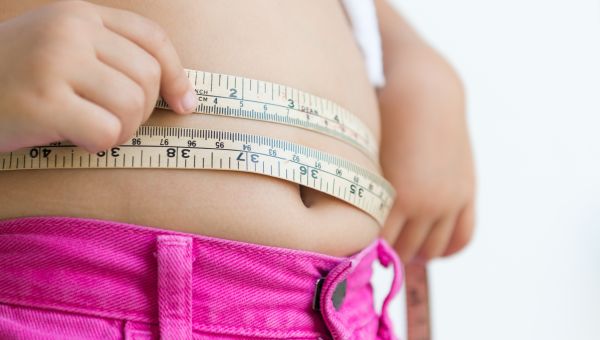Childhood Obesity Is a Major Problem—Is Your Child at Risk?

Nearly 5 million American children—some 15 percent of all kids aged 10 to 17—were obese in 2017-2018 according to an October 2019 report from the Robert Wood Johnson Foundation (RWJF). These findings suggest the childhood obesity epidemic isn’t really improving. In 2016, the national obesity rate among this age group was 16 percent—a statistically insignificant change.
Even young children are affected. The Centers for Disease Control and Prevention reports that about 13.7 million children and young adults aged 2 to 19 were obese in 2015-2016, increasing their risk for a slew of chronic health issues down the road.
Conditions, including high cholesterol, asthma, a weaker immune system, arthritis, cancer, heart disease, diabetes and even complications after surgery can develop if the body is carrying extra weight. There are emotional health effects associated with childhood obesity as well. Many overweight or obese children, for example, are often bullied or teased and may experience low self-esteem or depression.
Taking some steps early on to help your child shed excess weight could not only protect their long-term health but also improve their quality of life, according to Uwe Blecker, MD, a pediatric gastroenterologist at Tulane University Medical Center in New Orleans, Louisiana.
Know the warning signs
It’s “baby fat,” or “just a stage,” some parents will say. But ignoring your child’s weight problem won’t help it go away. Make an appointment with your pediatrician if you notice these signs:
- Snoring at night, or trouble sleeping
- Difficulty buttoning pants
- Shortness of breath
- Fatigue
- Trouble exercising or walking up stairs
Your pediatrician will help you understand if your child is an unhealthy weight for his or her age and height and the severity of the problem. “We look at their age on the BMI chart,” explains Dr. Blecker. BMI, or body mass index, is a measure of body fat for adults based on height and weight. The American Academy of Pediatrics recommends that this ratio can also be used for children older than age 2.
“A child is overweight when his or her BMI is above the 85th percentile, and obese if their BMI is at or above the 95th percentile,” Blecker explains.
Develop a weight-loss plan
Helping your child lose weight should begin and end with your pediatrician, says Blecker. He points out children’s age and how much growing they still need to do should be taken into consideration.
“We look at three age categories: 2 to 5 years, 6 to 11 years and 12 to 18 years. Children ages 2 to 5 have a very significant amount of growth in front of them,” Blecker says. And because they have a lot of growing to do, being overweight may not be a permanent problem. “When we have an obese child in that age group, we don’t work on losing weight necessarily, we just try to decrease or stop the weight gain.”
Once children hit age 12 or is going through puberty, working on weight loss becomes a larger issue. They need to make changes, Blecker says. “The big things are avoiding fried food and sugary drinks and adding in more fruits and vegetables.”
The proper exercise plan will also depend on your child’s age and weight. “We really can’t ask kids who are severely overweight to do significant physical activity because they weigh too much,” says Blecker. He recommends a gradual approach, starting with walking. As children lose weight and become more fit, their level of physical activity may increase.
Be a role model
Once you’ve identified that your child has a weight problem, setting a positive example with diet and exercise is key. “Obesity interventions do not work if the parents don’t participate,” Blecker emphasizes. He notes that he’s seen teenage patients who want to lose weight, but their parents continue to buy and serve them chips and soda. “That is not going to work,” he warns.
Sugary beverages, in particular, are a dietary pitfall that should not be overlooked, especially when it comes to kids. Sweet drinks remain a staple in many children’s diets. In fact, in the United States alone, beverages with added sugar or artificial sweeteners made up 62 percent of children’s drink sales in 2018, according to an October 2019 report from the University of Connecticut’s Rudd Center for Food Policy & Obesity. Meanwhile, only slightly healthier alternatives, such as 100 percent fruit juice and juice diluted with water, accounted for 38 percent of kids’ beverages. Researchers gathered this data by assessing the top-selling brands of children’s drinks, which included fruit drinks, flavored waters, drink mixes,100 percent fruit juice, juice-water blends and sparkling water.
It’s important to avoid the sugary drinks that pack on pounds, Blecker advises. “If children aren’t exposed to sugary drinks, they typically don’t want them,” he adds. It may be unrealistic to assume that your child or teenager won’t try a soda or a sugar-laden latte once in a while when they’re out with friends, at a birthday party or another event, he adds. Just be sure they aren’t in the habit of drinking them at home. Instead, try offering water with real fruit slices or unsweetened soda water, coconut water or teas.
Maintaining a healthy weight can become a family goal, inspiring some group activities. When you are together, try cooking a wholesome meal as a family, or make a habit of walking around the neighborhood every evening. You’ll spend more time with one another, and work together to shed extra pounds and improve your health and wellbeing.
Sourcing: CDC, Nemours, American Medical Association


